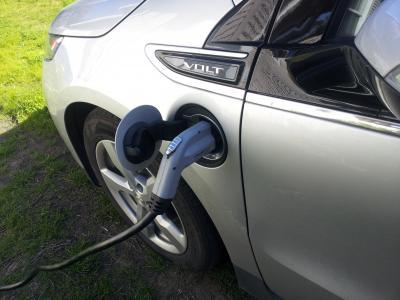Anti-nuclear activists have done everything they can to keep the best green energy available, out of America, continuing a successful blockade they got President Clinton to implement 20 years ago. Back then, they misstated the science and insisted any nuclear physics was going to lead to nuclear bombs. Today, they insist that, thanks to gigantic regulatory hurdles, including a Nuclear Regulatory Commission run by an anti-nuclear activist, nuclear energy is too expensive.
But conventional energy planning, which often focuses on minimizing the financial cost of energy production, is how environmentalists insured we ended up using a lot of dirty coal during that time and led to global warming. If instead policy makers use "net energy analyses" when evaluating the long-term sustainability of energy technologies, quantitatively comparing the amount of energy a technology produces over its lifetime with the energy required to build and maintain it, nuclear still looks quite good.
For example, in the last five years America has spent tens of billions of dollars subsidizing cheap solar panels, ethanol and wind, with nothing to show for it. That money spent on nuclear would have powered all of our additional energy needs for the next 25 years. By not using a net energy analysis, and believing hyperbole about current technology in ethanol, solar and wind, we are not any better off today than we were $72 billion years ago.

Is an electric car worthwhile in a net energy analysis? Sure, though the emissions are a killer. However, it would be if the energy were nuclear. Credit: Mark Shwartz/Stanford University
"The clearest answer to 'why is net energy important?' is that net energy, not money, fuels society," wrote lead author Michael Carbajales-Dale, a research associate in Stanford's Department of Energy Resources Engineering, in the Nature Climate Change paper. "Net energy analysis can identify potential costs and barriers to technology development that a traditional financial analysis might not.
"Put simply, we need to 'spend' energy to 'make' energy," Carbajales-Dale and his colleagues wrote. "The availability of energy fuels economic processes and economic growth. If the energy sector provided only enough energy to fuel its own processes, thereby providing no net energy, it would be of little use to society."
Sustainability studies
The authors cited a recent Stanford analysis, which found that the photovoltaic industry became a net energy provider about two years ago. Another 2013 Stanford study used net energy analysis to assess the long-term sustainability of wind and solar technologies. Calculations revealed that a typical wind turbine generates about 80 times more electricity over its lifetime than it consumes during manufacture and installation, and that a solar photovoltaic system produces about 10 times more electricity than it consumes.
According to the authors, net energy analysis can also be used to assess the long-term land and ecosystem impacts of developing energy technologies and resources, such as the Canadian oil sands. A 2013 analysis found that the oil sands industry supplies about five times more energy to society than it consumes, compared to the conventional oil industry, which supplies 10 to 20 times more energy than it uses.
These results suggest that both industries are net energy producers. However, further analysis reveals that oil sands require more energy for their extraction and processing than conventional oil, the Stanford team noted. Over time, "this increased energy intensity results in larger climate impacts per unit of energy supplied from the oil sands," they said.
Financial impacts
Net energy analysis also allows investors to identify potential costs and barriers to the development of new technologies, the authors said. For example, a recent study analyzing the energy balance for large-scale hydrogen production showed that a solar photoelectrochemical cell with 5-percent conversion efficiency requires a lifetime of at least five years before the net energy returns are positive.
"Extending the lifetime up to 30 years can yield devices that deliver six times as much energy as was used in their manufacture," the authors wrote. "Similar work has shown that for grid-scale electricity storage, increasing the number of times that a battery can be charged and discharged is the single-most important improvement that can be made."
Energy analyses can even guide investments away from financially sound but environmentally imprudent technology choices, they said.
"When managing complex systems, it is vitally important to have the right set of indicators to guide our decisions," the authors concluded. "We would not drive a car without a speedometer, nor fly a plane without an altimeter. Net energy analysis can guide decision-makers at all levels, from households to governments. We believe it is time for policymakers to make greater use of this critical tool."





Comments